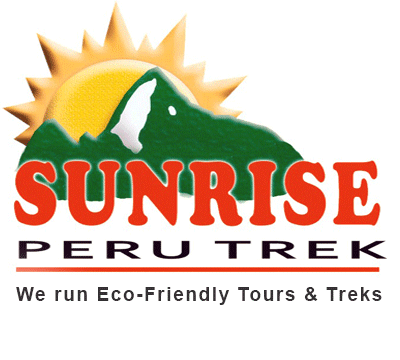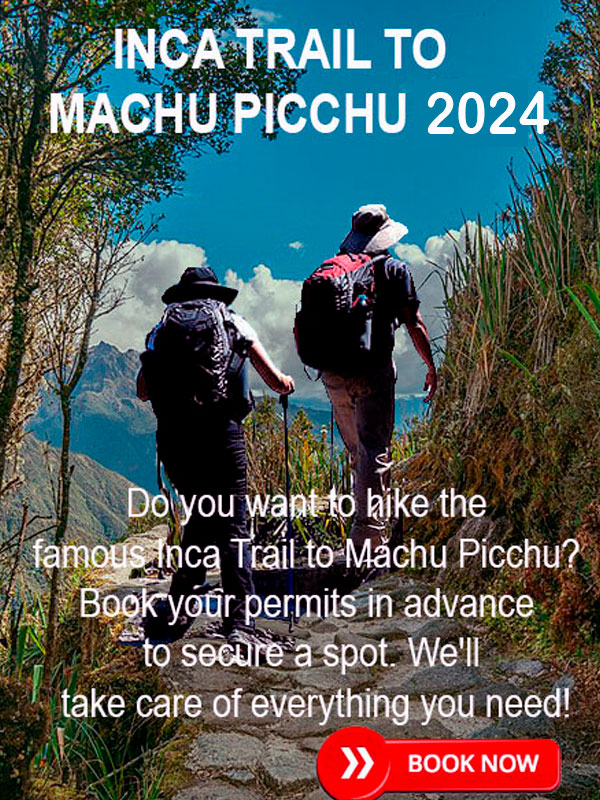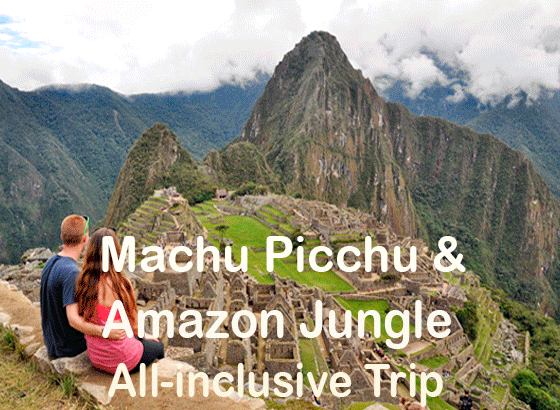Essential Inca Trail Tips for Hikers & Adventurists
If you’re an adventurous soul planning to embark on the legendary Inca Trail trek to Machu Picchu, then you’re in for an unforgettable experience. The Inca Trail is a world-renowned hiking trail that takes you through breathtaking landscapes and ancient ruins, offering a unique glimpse into Peru’s rich history and natural beauty.
Whether you’re an experienced hiker or a first-timer, it’s important to be well-prepared for this challenging adventure. In this article, we will provide you with essential Inca Trail tips and advice that will enhance your trekking experience and help you make the most of this incredible journey to Machu Picchu.
Key Takeaways:
- Plan ahead and understand the logistics of the Inca Trail trek
- Choose the best time to hike the Inca Trail to enjoy optimal weather conditions
- Prepare for altitude sickness and acclimatize properly
- Pack the right gear and essentials for a comfortable and successful trek
- Explore the highlights and attractions along the Inca Trail
Video About Inca Trail tips
Planning Your Inca Trail Journey
Before embarking on your Inca Trail adventure, proper planning is essential to ensure a seamless and enjoyable experience. Understanding the logistics involved and having the necessary documents and permits in place is crucial. In this section, we provide valuable Peru travel advice and information about Inca Trail permit requirements to help you prepare for your journey.
Research and Preparation
Start by researching the Inca Trail and familiarizing yourself with the route, landmarks, and attractions along the way. This will help you plan your itinerary and determine the duration of the trek. Additionally, take the time to understand the cultural significance of the trail and the dos and don’ts when visiting sacred sites such as Machu Picchu.
Inca Trail Permits Requirements
Acquiring the necessary permits is crucial to hike the Inca Trail. The Peruvian government strictly controls the number of visitors to preserve the trail and protect the natural environment. Inca Trail permits are limited and can sell out quickly, especially during the peak season. Make sure to check the availability of permits and book well in advance through a licensed tour operator.
Pro Tip: Be proactive and secure your Inca Trail permits as soon as your travel dates are finalized. This will ensure you have guaranteed access to the trail and avoid disappointment.
Travel Arrangements and Logistics
Consider your travel preferences and budget when arranging your logistics. Decide if you want to trek independently or join a guided tour. While independent trekking offers flexibility, joining a guided tour provides expert guidance, logistical support, and a richer cultural experience. Whichever option you choose, ensure you book accommodations, transportation, and additional services (if required) well in advance.
Health and Fitness
The Inca Trail involves strenuous physical activity and high altitudes. It’s important to assess your health and fitness levels before embarking on this adventure. Consult your healthcare professional if you have any pre-existing medical conditions and ensure you are physically prepared for the demanding trek. Incorporate regular exercise and cardio workouts into your routine to improve endurance and stamina.
Packing Essentials
Creating a packing list is essential to ensure you have all the necessary gear and supplies for the trek. Some key items to include are proper hiking boots, comfortable clothing for layering, a waterproof jacket, a sturdy backpack, a sleeping bag, a headlamp, sunscreen, and a hat. Don’t forget essentials such as snacks, water purification tablets, and a first aid kit.
Language and Cultural Awareness
As you embark on the Inca Trail, it’s important to have a basic understanding of the local language and culture. Learning a few simple Spanish phrases can help you communicate with the local people along the trail. Additionally, respect the customs and traditions of the indigenous communities you encounter, and always ask for permission before taking photos.
By following this Peru travel advice and understanding the Inca Trail permit requirements, you’ll be well-prepared for your journey. Now, let’s explore the best time to hike the Inca Trail and discover the breathtaking beauty of the Andes mountains.
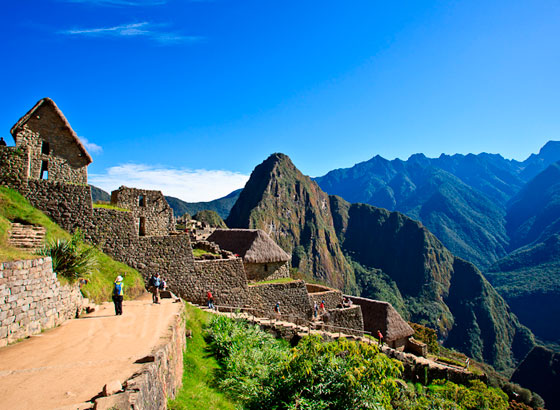
Choosing the Best Time to Hike the Inca Trail
The Inca Trail is a journey that promises breathtaking views and incredible landscapes. However, it’s important to consider the best time to hike this iconic trail, as weather conditions can vary throughout the year. By understanding the climate and conditions, you can plan your trip accordingly and make the most of your trek through the Andes Mountains.
The Andes Mountains, where the Inca Trail is located, experience distinct seasons that impact the trail’s conditions. The dry season, which runs from May to September, is generally regarded as the best time to hike the Inca Trail. During this period, you can expect minimal rainfall and clearer skies, providing optimum visibility of the stunning mountain scenery.
While the dry season may offer ideal trekking conditions, it’s also the busiest time on the trail. To avoid crowds and secure permits, consider hiking during the shoulder months of April and October. During these months, you can still enjoy relatively good weather and fewer hikers on the trail.
It’s important to note that even during the dry season, weather conditions in the Andes Mountains can be unpredictable. Mornings can be chilly, while afternoons tend to be warmer. It’s advisable to dress in layers and pack appropriate clothing to adjust to these temperature changes.
Andes Mountain Trekking
When embarking on the Inca Trail, you’ll have the unique opportunity to trek through the stunning Andes Mountains. As you make your way along the trail, you’ll be surrounded by awe-inspiring peaks, lush valleys, and diverse ecosystems. The Andes Mountains offer a truly unforgettable trekking experience filled with natural beauty and cultural significance.
Trekking through the Andes Mountains requires a good level of fitness and endurance. The trail includes steep ascents, descents, and uneven terrain, making it important to be prepared and physically capable. Incorporating regular exercise and cardiovascular training into your fitness routine can help you build the stamina needed for this challenging trek.
As you hike through the Andes, you’ll have the opportunity to witness the majestic landscapes and encounter unique flora and fauna. From the snow-capped peaks to the vibrant biodiversity, the Andes Mountains offer a captivating backdrop for your Inca Trail adventure.
Preparing for Altitude Sickness
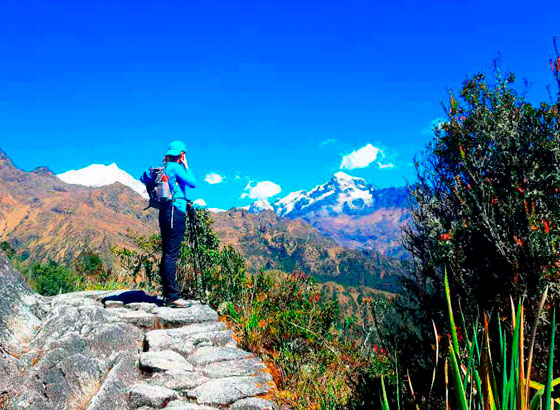 One of the challenges of trekking the Inca Trail is the high altitudes you will encounter along the way. Altitude sickness can affect anyone, regardless of their fitness level, so it’s important to take precautions and be prepared. In this section, we will provide you with valuable tips and advice on how to prevent altitude sickness, ensuring a safe and enjoyable trekking experience.
One of the challenges of trekking the Inca Trail is the high altitudes you will encounter along the way. Altitude sickness can affect anyone, regardless of their fitness level, so it’s important to take precautions and be prepared. In this section, we will provide you with valuable tips and advice on how to prevent altitude sickness, ensuring a safe and enjoyable trekking experience.
Understanding Altitude Sickness
Altitude sickness, also known as acute mountain sickness (AMS), occurs when our bodies are unable to adapt quickly enough to the reduced oxygen levels at higher altitudes. Symptoms can range from mild to severe and may include headache, nausea, dizziness, and fatigue. It’s important to pay attention to these symptoms and take action to prevent further complications.
“Altitude sickness can be a serious condition and can ruin your trip if not properly addressed. It’s important to be aware of the risks and take steps to prevent it.” – John Smith, experienced trekker
Acclimatization is Key
Proper acclimatization is crucial to minimize the risk of altitude sickness. It involves allowing your body time to adjust to the higher altitudes gradually. Here are a few tips to help you acclimatize effectively:
- Take your time: Plan your itinerary in a way that allows for gradual ascent, allowing your body to adapt.
- Stay hydrated: Drink plenty of water throughout the trek to keep your body hydrated and promote acclimatization.
- Listen to your body: Pay attention to any signs of altitude sickness and communicate with your guide or fellow trekkers if you’re feeling unwell.
Medications for Altitude Sickness
In some cases, your doctor may prescribe medications that can help prevent or alleviate the symptoms of altitude sickness. These medications should be taken under medical supervision, and it’s important to consult with your healthcare provider before taking any medication.
Hydration and Nutrition
Staying hydrated and nourished is essential during your trek. Adequate hydration helps your body cope with the altitude, and proper nutrition provides the energy you need for the arduous journey. Here are a few tips:
- Drink plenty of water: Aim to drink at least 3-4 liters of water per day.
- Consume carbohydrates: Include foods rich in carbohydrates, such as grains and fruits, to fuel your body.
- Avoid alcohol and caffeine: These substances can dehydrate your body and increase the risk of altitude sickness.
Packing List for the Inca Trail
When preparing for your Inca Trail adventure, it’s important to pack wisely. Having the right gear and essentials will enhance your hiking experience and ensure you’re well-prepared for the challenges ahead. Here is a comprehensive packing list to help you make the most of your journey:
Clothing:
- Moisture-wicking hiking shirts
- Long-sleeved shirts
- Fleece jacket or down coat
- Hiking pants and shorts
- Trekking socks
- Hat or beanie
- Gloves
Footwear:
- Sturdy hiking boots
- Comfortable hiking socks
- Sandals or camp shoes
Camping Equipment:
- Sturdy camping tent
- Sleeping bag suitable for cold temperatures
- Sleeping pad and pillow
- Headlamp or flashlight
- Cooking stove and utensils
- Water purification tablets or filter
Other Essentials:
- Daypack
- Trekking poles
- Sunscreen and lip balm
- Insect repellent
- First aid kit
- Snacks and water bottles
- Camera or smartphone for capturing your adventure
Remember to pack light and avoid unnecessary items. It’s important to have all the essentials without overburdening yourself with excessive weight. Be sure to also check the weather forecasts before your trek and adjust your packing list accordingly.
| Item | Quantity | Additional Notes |
| Moisture-wicking hiking shirts | 3-4 | – |
| Long-sleeved shirts | 2-3 | Protect from sun and insects |
| Fleece jacket or down coat | 1 | For cold nights |
| Hiking pants and shorts | 2-3 | Convertible pants are versatile |
| Trekking socks | 3-4 pairs | Extra pairs for longer treks |
| Hat or beanie | 1 | To protect from sun or cold |
| Gloves | 1 pair | For colder hikes |
| Sturdy hiking boots | 1 pair | Broken-in and waterproof |
| Comfortable hiking socks | 3-4 pairs | Extra pairs for longer treks |
| Sandals or camp shoes | 1 pair | For resting and campsite |
| Sturdy camping tent | 1 | Lightweight and easy to set up |
| Sleeping bag | 1 | Rated for cold temperatures |
| Sleeping pad and pillow | 1 each | For comfort during sleep |
| Headlamp or flashlight | 1 | For navigating at night |
| Cooking stove and utensils | 1 set | Lightweight and compact |
| Water purification tablets or filter | As needed | Ensure safe drinking water |
| Daypack | 1 | For carrying daily essentials |
| Trekking poles | 1-2 | Assist with balance and stability |
| Sunscreen and lip balm | As needed | Protect from sun exposure |
| Insect repellent | As needed | Prevent mosquito bites |
| First aid kit | 1 | Include essential medications |
| Snacks and water bottles | As needed | Pack lightweight and nutritious snacks |
| Camera or smartphone | 1 | Capture memorable moments |
Understanding the Inca Trail Difficulty Levels
The Inca Trail is an adventure that offers both awe-inspiring beauty and challenging terrain. It’s important to understand the different difficulty levels of the trail in order to prepare physically and mentally for the trek. By setting realistic expectations and following these Inca Trail tips and hiking tips, you can ensure a successful and memorable journey.
Difficulty Levels on the Inca Trail
The Inca Trail can be divided into three main difficulty levels:
- Easy: The easy sections of the trail are relatively flat and present minimal challenges. They are suitable for beginners or those who prefer a leisurely pace. These sections allow for more time to appreciate the stunning surroundings and immerse yourself in the rich history of the trail.
- Moderate: The moderate sections of the Inca Trail involve some inclines and uneven terrain. Hikers with a moderate level of fitness and hiking experience will find these sections manageable. It’s important to maintain a steady pace and stay hydrated to ensure a comfortable journey.
- Difficult: The difficult sections of the Inca Trail are physically demanding and require a higher level of fitness and endurance. Steep slopes, rugged terrain, and high altitudes characterize these sections. Proper preparation, including training and acclimatization, is essential for those attempting the difficult sections.
Physical and Mental Preparation
Preparing yourself both physically and mentally is crucial for a successful Inca Trail experience. Here are some tips to help you get ready:
- Physical Fitness: Engage in regular cardiovascular exercises such as hiking, jogging, or cycling to improve your stamina and endurance. Strengthen your leg muscles with exercises like squats and lunges.
- Altitude Training: If possible, acclimatize to higher altitudes prior to your trek. This can help reduce the risk of altitude sickness and make the high-altitude sections of the trail more manageable.
- Hiking Practice: Plan several practice hikes to simulate the conditions you’ll encounter on the Inca Trail. Gradually increase the distance and elevation of your hikes to build endurance.
- Mental Preparation: Stay positive and mentally prepared for the challenges ahead. Visualize yourself successfully completing the trail and focus on the breathtaking beauty and unique experiences you’ll encounter along the way.
“The Inca Trail is not just a physical journey, but also a mental and spiritual one. Embrace the adventure and allow yourself to be transformed by the ancient wonders that await.”
The Right Mindset for Success
As you embark on the Inca Trail, remember to approach the trek with the right mindset:
- Stay Positive: Embrace the challenges and setbacks as part of the journey. Your positive outlook will keep you motivated and focused on reaching your goals.
- Be Flexible: Understand that weather conditions and unforeseen circumstances can impact your trek. Stay flexible and adapt to changes, keeping safety as the top priority.
- Enjoy the Process: The Inca Trail is not just about reaching the final destination of Machu Picchu. Take the time to appreciate the stunning landscapes, ancient ruins, and unique flora and fauna along the way.
| Difficulty Level | Characteristics |
| Easy | Flat sections, suitable for beginners |
| Moderate | Inclines and uneven terrain, manageable for those with moderate fitness |
| Difficult | Steep slopes, rugged terrain, and high altitudes, requiring advanced fitness and endurance |
Exploring the Inca Trail Highlights
The Inca Trail is an extraordinary journey that offers more than just reaching Machu Picchu. Along the trail, you’ll encounter a myriad of awe-inspiring highlights and attractions that will leave you breathless. From ancient Inca ruins steeped in history to breathtaking vistas that showcase the incredible beauty of the Andes, the Inca Trail is a treasure trove of wonders waiting to be explored.
Ancient Inca Ruins
As you trek through the rugged terrain of the Inca Trail, you’ll come across remarkable ancient Inca ruins that serve as a testament to a once-thriving civilization. These archaeological sites, such as Wiñay Wayna and Intipata, offer a glimpse into the rich history and ingenuity of the Inca people. Marvel at the intricate stonework and imagine the bustling life that once filled these magnificent structures.
Breathtaking Vistas
Prepare to have your breath taken away by the jaw-dropping vistas that unfold before your eyes during the Inca Trail trek. From the stunning views of snow-capped peaks piercing the sky to the lush valleys below, every step on the trail offers a new and awe-inspiring perspective. Take a moment to soak in the beauty of nature and appreciate the grandeur of the Andes Mountains.
“The views along the Inca Trail are nothing short of magnificent. Each corner turned reveals a new and breathtaking landscape that truly captures the essence of the Andes.” – Adventure Seeker Magazine
Intimate Encounters with Nature
The Inca Trail is not only a cultural and historical adventure but also an opportunity to connect with nature on a profound level. Traverse verdant cloud forests teeming with diverse flora and fauna, listen to the symphony of birdsong, and feel the rhythm of the earth beneath your feet. This immersive experience in nature is a gift that the Inca Trail bestows upon every hiker who embarks on this incredible journey.
- Witness the vibrant colors of orchids and bromeliads.
- Spot unique bird species, including the Andean cock-of-the-rock.
- Encounter curious wildlife along the trail, such as viscachas and llamas.
The Inca Trail highlights are truly a feast for the senses, immersing you in the history, beauty, and natural wonders of Peru. Each step you take brings you closer to the awe-inspiring destination of Machu Picchu, but it is the journey itself that allows you to fully appreciate the magnificence of this ancient trail.
Navigating Inca Trail Permits and Regulations
Embarking on the Inca Trail is an exciting adventure, but it’s crucial to familiarize yourself with the necessary permits and regulations. Understanding and complying with these requirements will ensure a smooth and enjoyable trekking experience. In this section, we will provide a detailed overview of the Inca Trail permit requirements and the regulations set by the Peruvian government, along with essential Peru travel advice.
Inca Trail Permits Requirements
Before setting foot on the trail, hikers must obtain an Inca Trail permit. These permits are restricted and in high demand, making it essential to secure yours well in advance. The number of permits issued each day is limited to preserve the trail and minimize its impact. Therefore, it’s crucial to book your permit as soon as possible to avoid disappointment.
The permits for the Inca Trail are issued on a first-come, first-served basis, and they can only be obtained through authorized tour operators or travel agencies. Each permit is personal and non-transferable, meaning that you cannot sell or transfer your permit to another person.
When applying for your permit, you will need to provide personal details such as your full name, passport number, and nationality. Make sure to book your trek with a reputable tour operator who will handle the permit application process on your behalf, ensuring a seamless experience.
Peru Travel Advice
Aside from the Inca Trail permit, there are other travel requirements to consider when visiting Peru. All foreign visitors to Peru must have a valid passport with at least six months of validity remaining. Additionally, most visitors are granted a 90-day tourist visa upon entry, allowing for plenty of time to explore the country.
It’s essential to familiarize yourself with any travel advisories or warnings issued by your country’s government regarding travel to Peru. Stay informed about safety precautions, health recommendations, and any specific requirements or restrictions applicable to travelers.
“Obtaining the necessary permits and understanding the regulations is crucial for a seamless and enjoyable Inca Trail experience. Make sure to secure your Inca Trail permit well in advance and consult with a reputable tour operator for a hassle-free trek. Stay informed and comply with all travel requirements to ensure a memorable journey in Peru.”
| Important Information | Guidelines |
| Obtaining Inca Trail Permits | Secure your permit well in advance through an authorized tour operator. |
| Personal Details | Provide accurate personal information when applying for the permit. |
| Permit Validity | Permits are non-transferable and cannot be sold to another person. |
| Passport Requirements | Ensure your passport is valid for at least six months from the date of entry into Peru. |
| Visa Regulations | Check if you need a visa and ensure you comply with the tourist visa requirements. |
| Travel Advisories | Stay informed about any travel advisories or warnings issued for Peru by your country’s government. |
Tips for Responsible Inca Trail Trekking
As a responsible traveler, it’s important to minimize your impact on the environment and respect the local communities along the Inca Trail. By following these tips, you can contribute to the preservation of this historic trail.
Guidelines for Waste Management
Proper waste management is crucial for maintaining the beauty and integrity of the Inca Trail. When hiking, make sure to pack out all your trash and dispose of it in designated waste receptacles. Avoid leaving any litter behind, including food scraps, wrappers, and plastic bottles.
Cultural Sensitivity
Respect for the local culture is essential when trekking the Inca Trail. Be mindful of the customs, traditions, and beliefs of the local communities you encounter. Dress appropriately, ask for permission before taking photographs of people or sacred sites, and refrain from touching or removing any artifacts or offerings.
Sustainable Practices
Adopt sustainable practices during your Inca Trail trek to minimize your ecological footprint. Use reusable water bottles or water purification systems instead of single-use plastic bottles. Avoid purchasing souvenirs made from endangered plants or animals, and support local artisans and businesses that operate sustainably.
“Responsible trekking on the Inca Trail involves balancing your own adventure with preserving the natural beauty and cultural heritage of the route.”
Support Local Communities
Contribute positively to the local communities along the Inca Trail by supporting local businesses and initiatives. Stay in locally-owned accommodations, hire local guides, and purchase handmade crafts or products from local artisans. This way, you directly benefit the communities you visit and help sustain their traditional way of life.
Remember, responsible Inca Trail trekking is not just about enjoying the journey; it’s about leaving a positive impact for future generations of adventurers to come.
| Responsible Inca Trail Trekking Tips | Inca Trail Tips | Peru Travel Advice |
| Practice proper waste management | ✔ | – |
| Show cultural sensitivity | ✔ | – |
| Adopt sustainable practices | ✔ | – |
| Support local communities | ✔ | – |
Staying Safe and Healthy on the Inca Trail
When embarking on the adventure of trekking the Inca Trail, the safety and well-being of every hiker should be a top priority. In this section, we will provide valuable tips and advice on how to stay safe and healthy throughout your journey. By following these essential Inca Trail tips, you can ensure a successful and injury-free trek.
Altitude Sickness Prevention
One of the most significant challenges trekkers face on the Inca Trail is altitude sickness. To prevent altitude sickness:
- Take time to acclimate: Allow your body to adjust to the altitude by spending a few days in Cusco or another high-altitude location before starting the trek.
- Stay hydrated: Drink plenty of water throughout the day to stay hydrated and combat the effects of altitude.
- Use medication if necessary: Consult with your doctor about medication options such as acetazolamide (Diamox) to prevent altitude sickness.
- Take it slow: Pace yourself and allow your body to adjust to the altitude. Avoid pushing too hard or overexerting yourself.
Inca Trail Tips for a Safe Trek
In addition to altitude sickness prevention, there are other important safety measures and precautions to keep in mind:
- Wear proper footwear: Use sturdy, well-fitting hiking boots to protect your feet and prevent injuries.
- Dress in layers: The weather on the Inca Trail can vary throughout the day. Dressing in layers allows you to adjust to changing temperatures.
- Pack essentials: Carry a first aid kit with basic supplies, sunscreen, insect repellent, and a headlamp for emergencies.
“Safety is not an accident. It is a choice.”
By following these Inca Trail tips for staying safe and preventing altitude sickness, you can ensure an unforgettable and enjoyable trek on this historic trail. Remember, preparation, caution, and responsible hiking practices are key to a successful journey.
Conclusion
In conclusion, the Inca Trail offers a once-in-a-lifetime adventure to Machu Picchu. By following these essential Inca Trail tips and advice, you can enhance your trekking experience and make unforgettable memories.
Remember to plan ahead, prepare physically and mentally, and embrace the incredible beauty and history that the Inca Trail has to offer. With proper planning, packing, and understanding of the trail’s difficulty levels, you’ll be well-prepared for this awe-inspiring journey.
So lace up your hiking boots, take a deep breath, and immerse yourself in the beauty of the Andes Mountains. The Inca Trail awaits, ready to take you on an adventure you’ll cherish for a lifetime.
FAQ
What are some essential Inca Trail tips for hikers and adventurists?
Some essential tips for hiking the Inca Trail include training before your trek, packing light, wearing comfortable and sturdy footwear, staying hydrated, and using trekking poles for support.
What documents and permits do I need for the Inca Trail?
To trek the Inca Trail, you will need an official Inca Trail permit, which can only be obtained through a licensed tour operator. You will also need a valid passport and, if applicable, a visa to enter Peru.
When is the best time to hike the Inca Trail?
The best time to hike the Inca Trail is during the dry season, which typically runs from May to September. The weather is generally clear and sunny, making it easier to enjoy the stunning views. However, keep in mind that these months are also the busiest, so it’s important to book your permits well in advance.
How can I prevent altitude sickness while hiking the Inca Trail?
To prevent altitude sickness, it’s crucial to acclimatize properly. Spend a couple of days in Cusco or another high-altitude location before starting your trek. Stay hydrated, avoid alcohol and excessive physical exertion, and consider taking medication such as Diamox, as recommended by a healthcare professional.
What should I pack for the Inca Trail?
When packing for the Inca Trail, essentials include a good quality backpack, comfortable hiking clothes, sturdy hiking boots, a warm sleeping bag, a headlamp, sunscreen, insect repellent, and a refillable water bottle. Don’t forget to pack some snacks and a camera to capture the incredible views!
How difficult is the Inca Trail?
The Inca Trail is considered a moderate to strenuous trek, with steep ascents and descents, as well as challenging terrain. It requires a reasonable level of fitness and stamina. However, with proper preparation, including regular exercise and training hikes, most people can successfully complete the trail.
What are some highlights of the Inca Trail?
Along the Inca Trail, you’ll encounter remarkable highlights such as the archaeological sites of Wiñay Wayna and Intipata, the stunning views from Dead Woman’s Pass, and, of course, the majestic ancient city of Machu Picchu itself. Each step of the journey offers breathtaking scenery and a sense of awe-inspiring history.
What are the permit requirements for the Inca Trail?
To obtain a permit for the Inca Trail, you must book with a licensed tour operator or trekking agency. Permits are limited and in high demand, so it’s advisable to book well in advance—ideally at least six months to a year ahead of your desired trekking date.
How can I be a responsible traveler on the Inca Trail?
Being a responsible traveler on the Inca Trail includes adhering to all regulations and guidelines set by the Peruvian government, respecting the natural environment, disposing of waste properly, and being culturally sensitive to the local communities and their customs.
What are some safety tips for hiking the Inca Trail?
Safety is paramount when hiking the Inca Trail. Some important safety tips include hiking with a trustworthy and experienced guide, staying on marked trails, bringing a first aid kit, informing others of your plans, and being aware of potential hazards such as unstable terrain and changing weather conditions.
